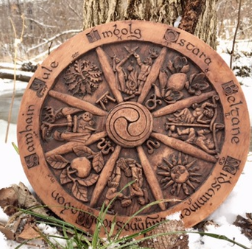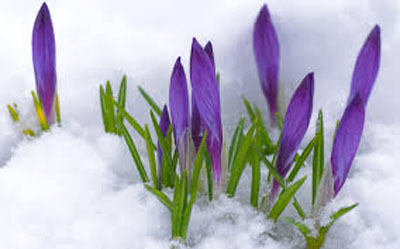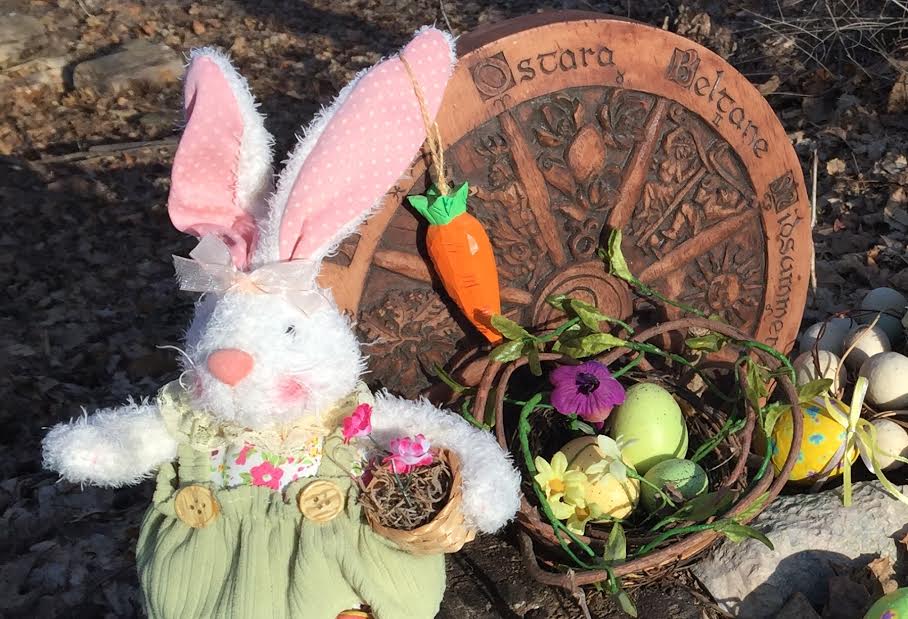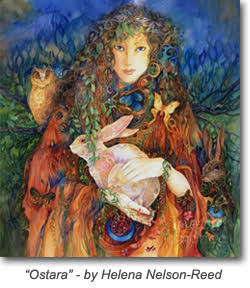The Seasonal Psychologist is a year-long series by Pagan Psychologist Betz King. Each piece corresponds to one of the 8 Pagan Sabbats, or holidays, while exploring ways to use the symbolism of the season for personal growth and in clinical practice.
I conceptualize both my personal development, and that of my clients, within the framework of our local 4-season landscape. Mostly this means a framework of trees, crops native to Michigan, and lots of plants, crops, and flowers. The Pagan path is a seasonal one, hosting 8 holidays called Sabbats. They parallel the movement of the sun across a year. Each holiday expresses a facet of the relationship between Light, Dark, and life. I use them as lenses of reflection, opportunities to contemplate the cycle of birth, growth, harvest and death that impacts all living beings.
As a Pagan psychologist, many of my clients have some form of an earth based belief system. This allows us to revisit treatment goals seasonally. The view from my office window is lush with trees. A simple glance outside provides the framework for our review; whatever the trees are doing becomes an invitation to consider the same within ourselves. The Oak Holly, whose strength peaks at Midwinter, begins to retreat with the warming temperatures and we are reminded that one season’s strength is another’s weakness.
On Imbolc

If we imagine the year as a pie, sliced into 8 equal pieces, then each slice represents about 6 weeks. 6 weeks doesn’t sound like a long time, but where Mother Earth is concerned a lot can happen in 6 weeks, especially in Michigan! At Winter Solstice, the earth was frozen solid, and we remained that way well past our next Pagan holiday, called Imbolc, or Candlemas. It falls smack dab in the middle of Winter Solstice and Spring Equinox on February 2nd (also known as St. Brigid’s Day and Groundhog’s Day).
Depending on where you seek definition, Imbolc is thought to mean ‘in the belly,’ ‘first milk,’ and ‘cleansing’. All are references to the first signs of life after a long, long winter. Animals do not give birth in conditions unsuitable for newborns, therefore nursing lambs give us our first sight of the coming spring. Far underground, the snowdrops and crocus are stretching towards the light. They are so eager for the sun that they – unlike the wise little lambs – frequently birth themselves too early and are covered with snow. Yet they survive.

Groundhog Day is a secular offshoot of Imbolc, when Pagan representative “Punxsutawney Phil” comes out of hibernation to predict the coming spring. Regardless of whether he sees his shadow or not, Spring will come soon. Traditionally, this Sabbat is celebrated with the color white, symbolizing purity and innocence. If Yule is the re-birth of the Sun, then the Sun at Imbolc still an infant, but well on the way to being a playful toddler. Imbolc brings a sense of impending adventure, much like the toddler feels when beginning to stand upright and, well… tottle! The year is new, the body young; there’s much exploring to be done! Imbolc is a betwixt and between Sabbat, neither Winter nor Spring. As such, it offers us much to contemplate:
- These first lambs of Imbolc must rely of the milk of their mother, for all other food lies still under frozen ground. This milk sustains them, meeting all of their needs and allowing them to grow. Where / what is your milk supply?
- In some traditions, Candlemas / Imbolc is considered auspicious for undergoing a ceremonial initiation, or dedicating oneself to a new path or course of study. As you consider the months ahead, what are you called to swear allegiance to? What would you like to study more deeply?
- Once the tender plants of spring break the surface of the earth, there can be no turning back the hands of time. Therefore, these last weeks before the spring can be viewed as the final resting days, and the final preparing days. How are you resting, and in preparation for what?
In Michigan, the period between Imbolc and the Spring Equinox is always a time of wild weather, and this year has not disappointed. Temperatures swung between frigid wind chills and warm breezes, with flood causing rains and tree bending snow often in the same week!
We also “spring forward” into daylight savings time, a change that both exhausts and exhilarates us at the same time. This turmoil inside of our Mother Earth makes perfect sense. The last weeks of any pregnancy are uncomfortable and unpredictable on all counts save one – new life will be born. And so it is here, whether we are patient or not. Spring will come, and once it does, the flurry of new growth will be disorientingly spectacular.
Those seed catalogs you’ve been thumbing through all winter? It’s time to place your order.
On Ostara

Remember the commercial for Reese’s Peanut Butter Cups? “You got your peanut butter in my chocolate!” “No, you got your chocolate in my peanut butter!” Spring Equinox, or Ostara, could easily have a similar ad – “You got your Paganism in my Christianity!” “No, you got your Christianity in my Paganism!”
Usually falling on March 20 or 21, the Spring, or Vernal Equinox is close enough to Easter for all kinds of decorations to get mixed up. Eggs hang from trees. Let that sink in. Eggs (fertility symbols) hang from trees (sacred to Pagans). Chocolate bunnies abound (nothing fertile about that)!
As Christianity became the dominate religion of the land, it is thought that Easter was strategically placed atop of Spring Equinox so as not to upset the village folk who likely worshipped a feminine life-giving Goddess. For some, this might have been the Germanic Goddess Eostre, or Ostara.
Traditionally honored in the spring, her festivals celebrated fertility and rebirth. She was often portrayed with a wild hare and a basket of eggs, strolling across the land, awakening flora and fauna alike. This is the root of our Christian word Easter, and also the word estrogen (a key component in fertility).
Whether celebrating the resurrection of Christ from the grave, or the earth from deep slumber, Spring brings us a lovely mish mash of symbols to celebrate our victory over real, or metaphoric death. For just a brief moment in time, day and night are of equal length, and then, joyfully, it’s all downhill to Summer as the day grow longer minute by minute.
Last fall, many seeds were planted in your garden of life. Some you planted with great intention, some fell accidentally onto your tilled ground. Psychologically, this is a time to watch with great curiosity while those seeds begin to peek through the earth. What are you hoping to see come spring, and what would it surprise you to see?

This month, my clients and I happily negotiate the sun shining in the window and comment on the lengthening hours of daylight. There is a collective sense of “whew, we made it.” We will talk about the psychological perennials that come up every year – hope, rebirth, growth – and we’ll discuss the annual seeds we’ve been thinking about planting – new goals and new paths to express all that has been growing inside across the dark cold months, now ready to take wobbly baby steps forward into the light.
Perhaps most importantly for therapy, we will discuss the parts of the self that – like Dumbledore’s Phoenix Fawkes – have embraced the fires of transformation and have emerged reborn. This is the process of psychotherapy; we grow, we transform, that which no longer serves us falls away, and that which is left is stronger and wiser.
This spring, when you see bunnies, painted eggs, daffodils and tulips, I invite you to take a moment to contemplate your own resurrection. You’ve successfully negotiated the dark night of the soul that Winter brings, and are born again. What transformed in those cold months of darkness? What now emerges better than ever?
Whether celebrating Ostara, Easter or the Spring Equinox, fertility abounds and you are a powerful gardener. What innocent newness will you protect and promote until the Summer Sun arrives? Happy resurrection of choice!
 Betz King, PsyD, LP is an associated faculty member in MSP’s Master’s program. About her new blog series, she writes, “The Seasonal Psychologist explores my intersectionality as a Solitary Pagan and psychologist, through an integration of teachings and tools from both psychological and spiritual traditions.” Read more about Dr. King, including her American Priestess / Priest Training Program, here.
Betz King, PsyD, LP is an associated faculty member in MSP’s Master’s program. About her new blog series, she writes, “The Seasonal Psychologist explores my intersectionality as a Solitary Pagan and psychologist, through an integration of teachings and tools from both psychological and spiritual traditions.” Read more about Dr. King, including her American Priestess / Priest Training Program, here.